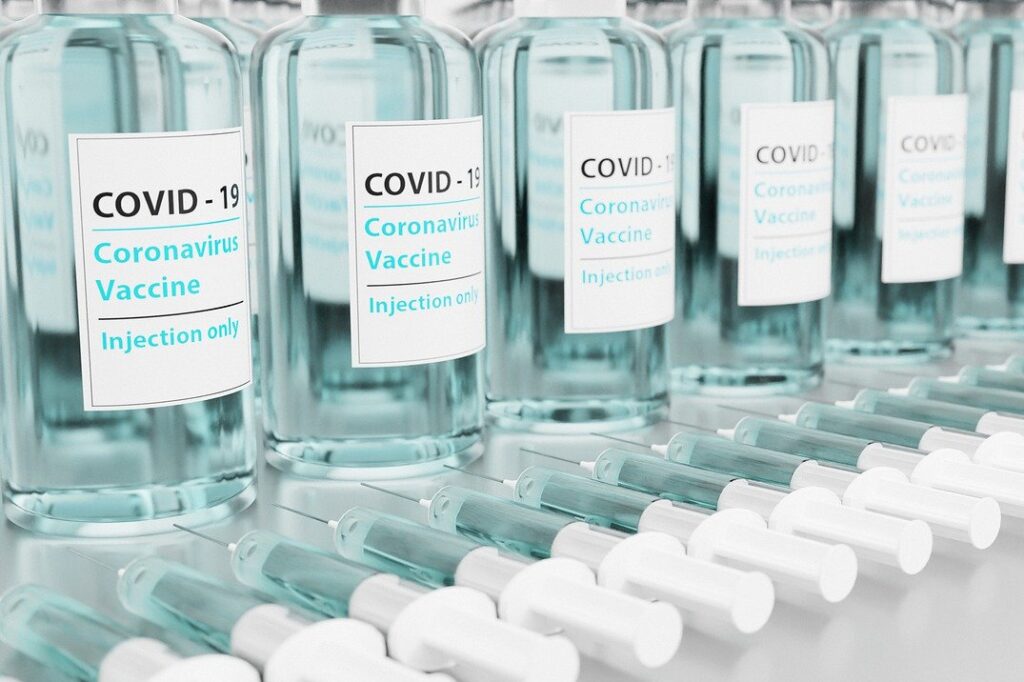Public health has learned to be nimble when it comes to employing case investigation and contact tracing (CI/CT) to mitigate the spread of the SARS-CoV-2 virus that causes COVID-19. CI/CT has been used to reduce the spread of highly infectious diseases in the U.S. for more than 200 years.
Recent outbreaks of measles, mumps, hepatitis A, and other diseases have been successfully contained through this practice of contacting individuals who are ill or exposed to ill individuals, obtaining information about their illness or exposure, and advising them to quarantine or isolate according to guidance provided by the Centers for Disease Control and Prevention (CDC). The COVID-19 pandemic, however, provided unprecedented challenges, with more than 93 million people in the U.S. diagnosed as infected with the virus and hundreds of millions of contacts identified since January 2020.
Effective CI/CT requires the timely notification of cases and contacts, the cooperation of individuals with isolation or quarantine guidelines, and readily available testing with timely results. Once transmission of COVID-19 became widespread across communities, none of those requirements could be met and universal CI/CT lost its utility.
States changed their approach to CI/CT during the pandemic due to the high volume of cases and contacts. Most states moved away from universal CI/CT in late 2021 or early 2022, shifting the focus of their efforts to populations at higher risk for severe COVID-19 disease — those living in congregate care settings, people who are incarcerated, and the very young and very old. At the same time, states intensified their efforts to connect individuals with wrap-around services that could make it easier for them to follow guidelines to isolate or quarantine. These services included supports such as food and grocery delivery or the provision of hotel rooms for those who could not isolate in their own homes.
NASHP joined Mathematica in working to understand the evolution of CI/CT efforts across states during the first two years of the pandemic through analysis of state efforts around CI/CT. Here, we’ll look at examples of state approaches to connecting people with the necessary supports to successfully isolate or quarantine and focuses on strategies to support the highest risk populations.
States Connected Individuals to Existing Resources
Over the course of the pandemic, most states provided some degree of support to people who could not safely isolate or quarantine at home. Several states connected individuals with existing resources that could provide food, shelter, and other needed supports during isolation or quarantine. For example:
Individuals in North Carolina who were in need of resources were referred to NC211 (an information and referral service provided by United Way of North Carolina) or NCCARE360, North Carolina’s statewide care coordination network that allows providers and organizations to connect individuals to social support resources in the community. NCCARE360 is the result of a public-private partnership between the North Carolina Department of Health and Human Services and the Foundation for Health Leadership & Innovation and is implemented by a team that includes United Way of North Carolina/NC211 (connects individuals to local resources), Unite Us (provides care coordination and the outcomes platform for NCCARES360 and fosters real-time collaboration between health care providers, community-based organizations, and others), and Expound Decision Systems (created a data repository to manage resources specific to social determinants of health in North Carolina).
South Dakota referred individuals in need of services to www.helplinecenter.org, a 24/7 agency that serves all of South Dakota, connecting individuals to resources and support. Helpline Center also provides a crisis line that is certified through the American Association of Suicidology.
Alabama referred individuals in need to Alabama Voluntary Organizations Active in Disaster (VOAD), an affiliate of National Voluntary Organizations Active in Disaster. Alabama VOAD is comprised of local organizations and local representatives of national organizations that respond to communities affected by disaster.
In Connecticut, a statewide software system called ContaCT was used to identify and refer people who need support throughout self-isolation or self-quarantine. Case workers connected people with state, local, and regional resources as necessary, such as food and housing.
States Created New Social Support Networks and Infrastructure
In addition to connecting individuals to existing resources, several states created new networks and initiatives to support individuals who needed to isolate.
In August 2020, California announced an $81.8 million effort to fund community-based organizations to connect people who were unable to isolate and quarantine to appropriate services. The initiative focused on communities that were disproportionately affected by COVID-19, and funding was earmarked to support the development of a culturally and linguistically competent CI/CT workforce. California’s Department of Social Services established “Project Roomkey” in March 2020 to provide support to individuals who were unhoused and needed a safe place to recover from COVID-19 and those who could not safely isolate or quarantine at home. Project Roomkey provides temporary shelter and serves as a pathway to connect individuals to permanent housing.
Washington state developed Care Connect Washington, a service that works to connect exposed or COVID-19–positive Washingtonians to needed food, housing, or other essentials via community-based organizations providing that assistance. The program provides information to individuals in their preferred language and operates on a regional basis in partnership with community-based organizations. In September 2020, Connecticut announced new programs to support individuals who needed to isolate or quarantine. The Community Resource Coordinator Program, a public-private partnership, worked with CI/CT teams to ensure access to food, housing, and income so individuals could remain at home. The state also dedicated $220,000 each month to short-term hotel options for those who could not isolate or quarantine at home, and $108,170 over five months to provide cash cards to individuals who were missing work.
In 2020, Illinois announced the COVID-19 Pandemic Health Navigator Program, which used Pandemic Health Navigators (PHNs) to provide education and coordination of resources to vulnerable communities and provide contact tracing support to the Illinois Contact Tracing Collaborative. The PHNs are responsible for mapping all available community resources and linking cases and contacts to those resource providers.
In September 2020, Maine allocated $1 million to 24 organizations under the COVID-19 Health Equity Improvement Initiative to support culturally tailored prevention, education, and social support activities. The state also partnered with Maine Community Action Partnership agencies to provide support to those who needed to quarantine or isolate, Wabanaki Public Health to support Maine tribal members, and Catholic Charities to provide support to racial and ethnic minorities and assist with contact tracing.
The COVID-19 pandemic brought with it both adherence to standard CI/CT protocols and a revolution in state approaches to linking people to resources through the CI/CT process. State leaders have recognized the important role CI/CT efforts can play in identifying needs and connecting individuals to resources and have the opportunity to incorporate these elements into CI/CT for non-pandemic diseases.
Funding provided to states through the federal government during the pandemic has been used to expand infrastructure, create stronger public-private partnerships, and improve access to resources for those in need. Future pandemic response approaches could build on successes in linking CI/CT and foundational isolation support and other needed resources to sustain a robust public health response to identified cases and contacts.
New investments and policy approaches from federal partners at the U.S. Department of Health and Human Services (such as CDC’s investment in public health infrastructure and Centers for Medicare and Medicaid Services’ current policy approach to health-related social needs and framework for health equity) may support state approaches to building community-based linkages to such resources. The sustainability will largely depend on the availability of financial support that extends well beyond the end of the pandemic and ongoing federal, state, and local collaboration to prepare for future pandemic response.




